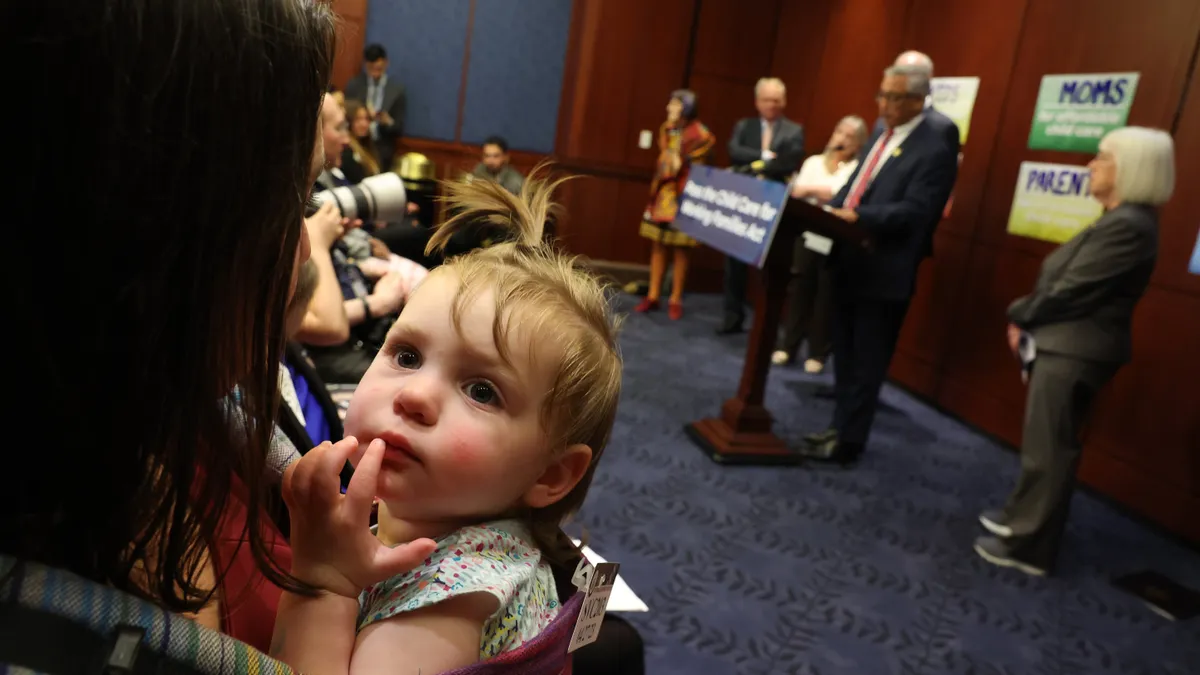That there are gender pay differences within the American workforce is well established.
White House statistics say that full-time working women earn 77% of what their male counterparts earn. Translated, it means it takes about 60 working days to earn what men did by the end of the previous year.
The Pew Research Center’s estimate finds women earn 84% of what men earn, approximately 40 days for women to earn what men had by the end of last year.
With that as context, it should come as no surprise that a recent analysis found there is a 26% shortfall between men and women’s retirement savings.
Why women lose out on retirement savings
The analysis, from Financial Finesse in El Segundo, Calif., looked at median incomes, deferral rates, retirement savings, life expectancies and projected healthcare costs to determine how much the median 45-year-old man and woman would need to save in order to replace 70% of their income in retirement.
The gender gap climbs to a whopping 95% when looking at what is needed to cover estimated retirement expenditures for the average American employee. Additionally, the company’s Think Tank found a large “confidence gap” between genders in the areas of money management and investing.
“While women have been closing the gap in many areas of financial planning since 2012, this is still a concern since women face higher hurdles to achieving retirement security,” says Liz Davidson, Financial Finesse’s CEO. “Women need to be saving more, and at a faster pace, than men to meet their retirement income needs.”
Davidson explains that there are key drivers behind why women are experiencing more of a shortfall in retirement savings. One is that women tend to be in the workforce for shorter periods of time, due to taking care of children and parents. For example, according to a study by the Department of Professional Employees, women make up less than half of the general workforce in America.
Women also have a longer life expectancy by an average of 2.3 years, and have higher healthcare expenses—nearly $20,000 more on average--in retirement as a result. And with generally lower incomes during their careers, they also receive lower Social Security benefits—women are still earning about $.78 cents on the dollar compared to men.
Finally, women have much less saved for retirement, as a Vanguard study found that women’s retirement savings is nearly one-third less than men’s.
“It’s very clear women must do more to be prepared for retirement than men,” Davidson says. “They cannot simply save the same amount as men -- it won’t get them to a place of security because they face more challenges than men do in retirement.”
Strategies to close the gap
Davidson says HR executives and benefits executives are in a unique position to narrow the gap, citing some best practices for improving both men and women’s financial wellness through the workplace:
Offer holistic financial wellness – This effort must cover all financial planning issues, from budgeting to advanced topics like estate and tax planning. Women are more apt to use programs offered by their employers and respond most favorably to education and guidance that approaches money from a big picture viewpoint. Employers should also integrate all of employee benefits with specific guidance on how they can most effectively manage their benefits as part of their overall financial plans. As a result of programs that take this approach, women are making strides forward in all areas of financial planning according to our research.
Eliminate support bias - If at all possible, provide guidance through an unbiased third party vendor who has no conflicts of interest, rather than a professional who has an end goal to sell financial products or services to employees, or manages assets. HR should position the program as an ongoing employee benefit to provide the support and accountability that employees need to make, sustain and build upon positive financial habits and behaviors.
“Employees trust their employers significantly more than the financial services industry, and they need to feel comfortable with the guidance being provided by employers in order to benefit from it,” Davidson says.
Tap technology - Finally, in conjunction with a financial wellness program that is holistic in nature and offered by unbiased financial professionals, HR executives should consider leveraging plan technology like using auto enrollment and auto escalation features in their plans so that employees are set up to capture the full match (if they have one) and increase their savings over time, without noticing significant reductions in their take home pay.
“The retirement gap must be reduced,” Davidson says, adding that women made up two-thirds of users to Financial Finesse’s online Financial Learning Center in 2014. “The good news is that women are on track to increase their retirement preparedness. They are making strides and continue to be heavy users of employer-provided financial wellness services.”




















